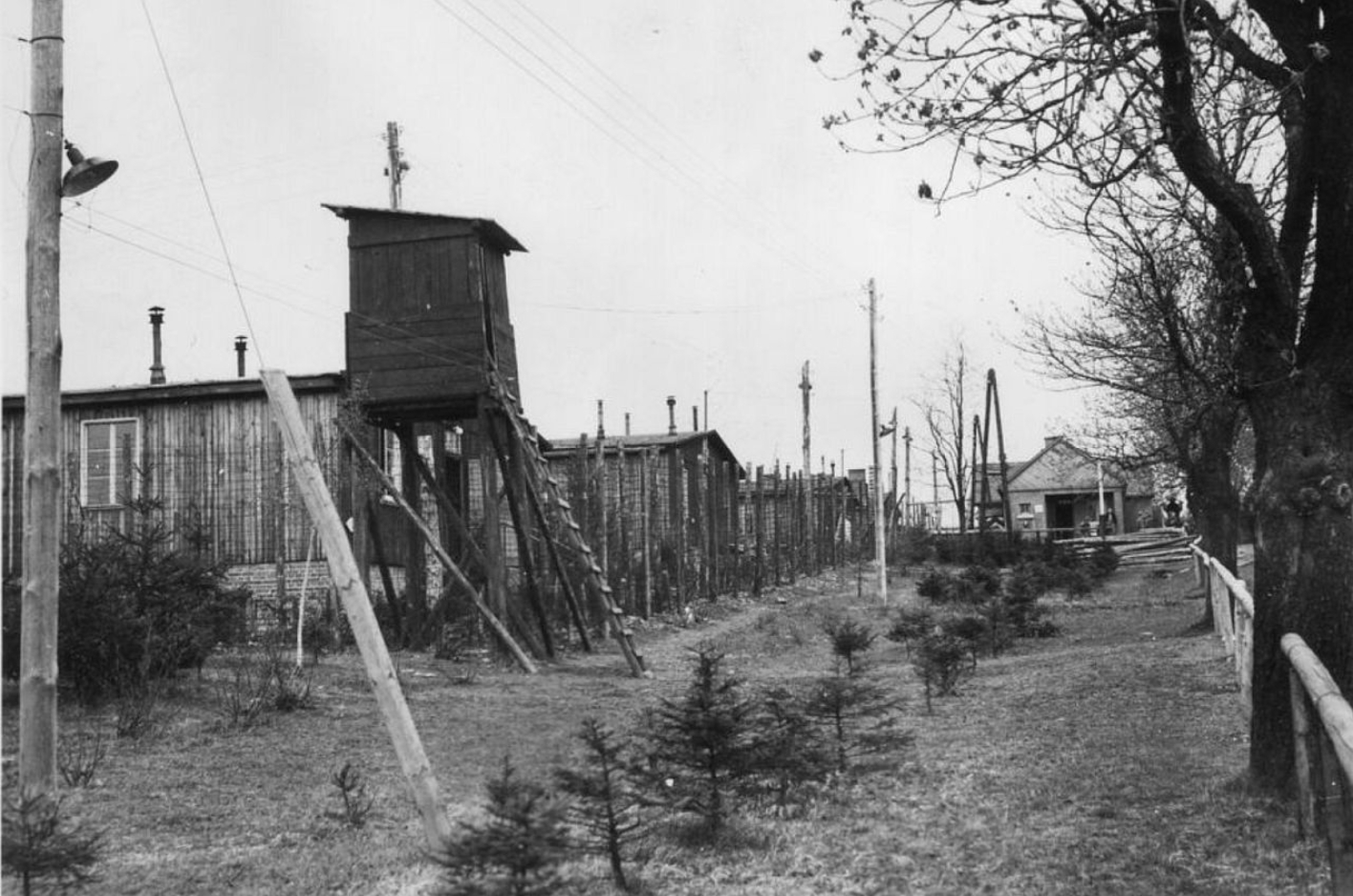
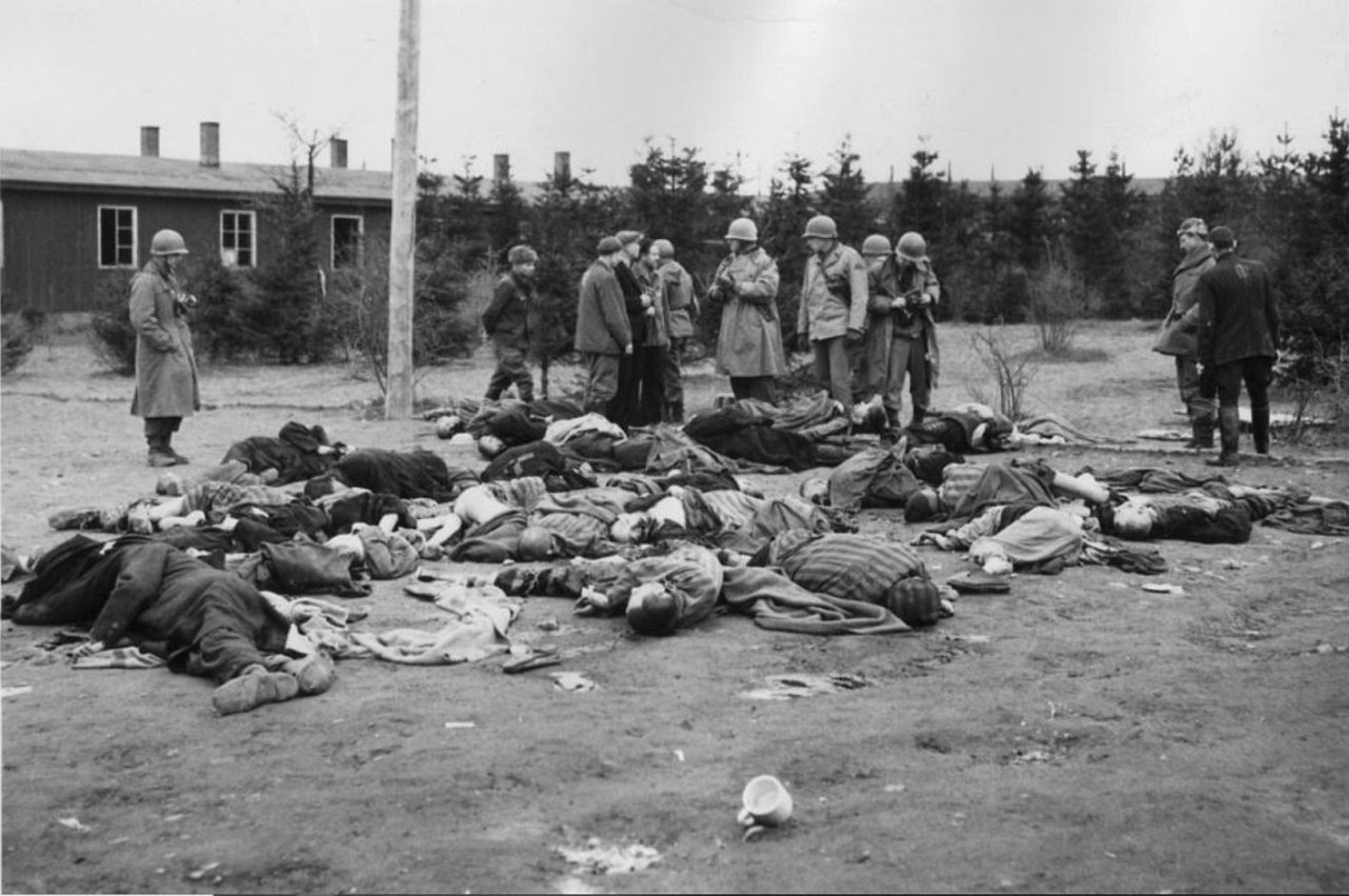
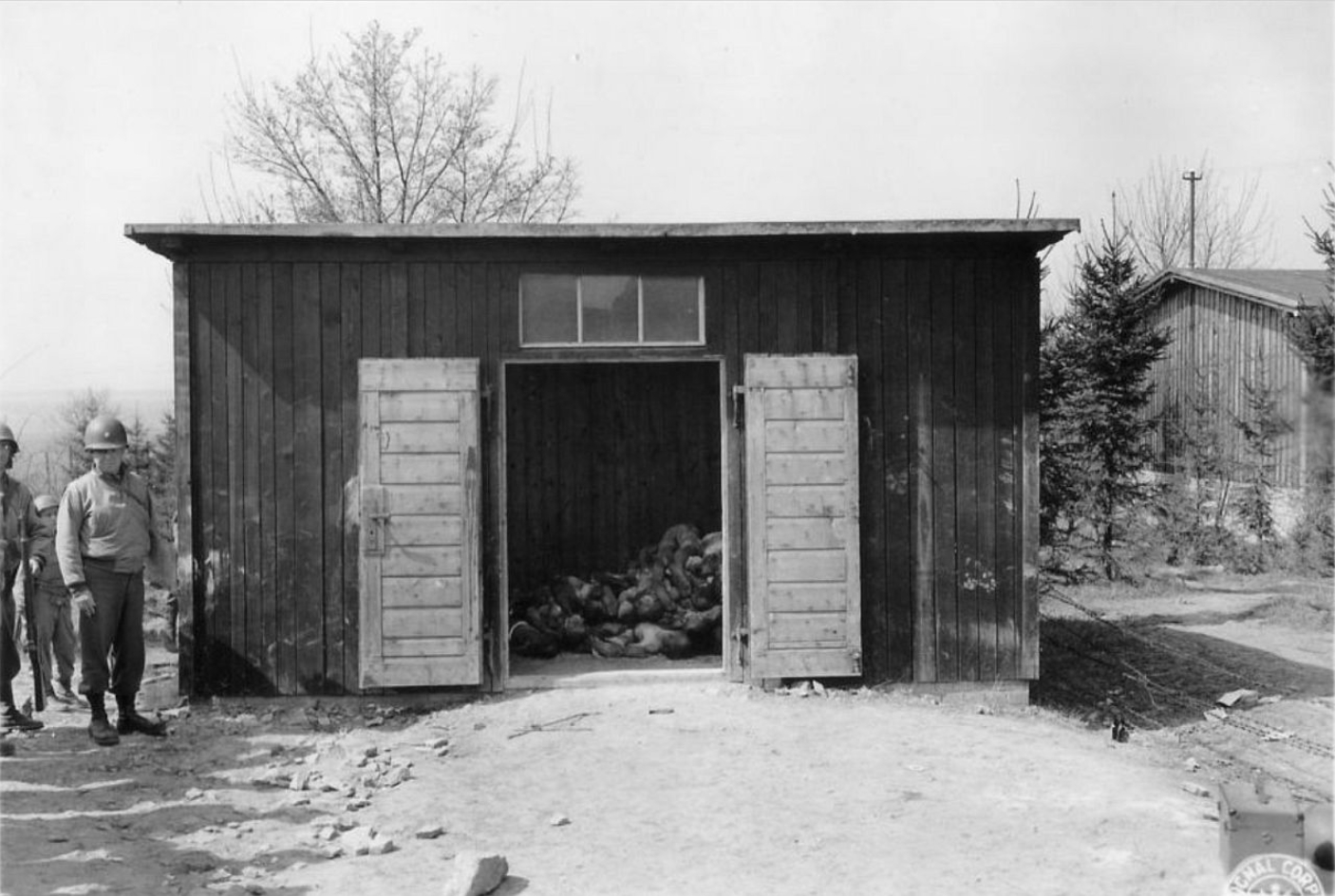
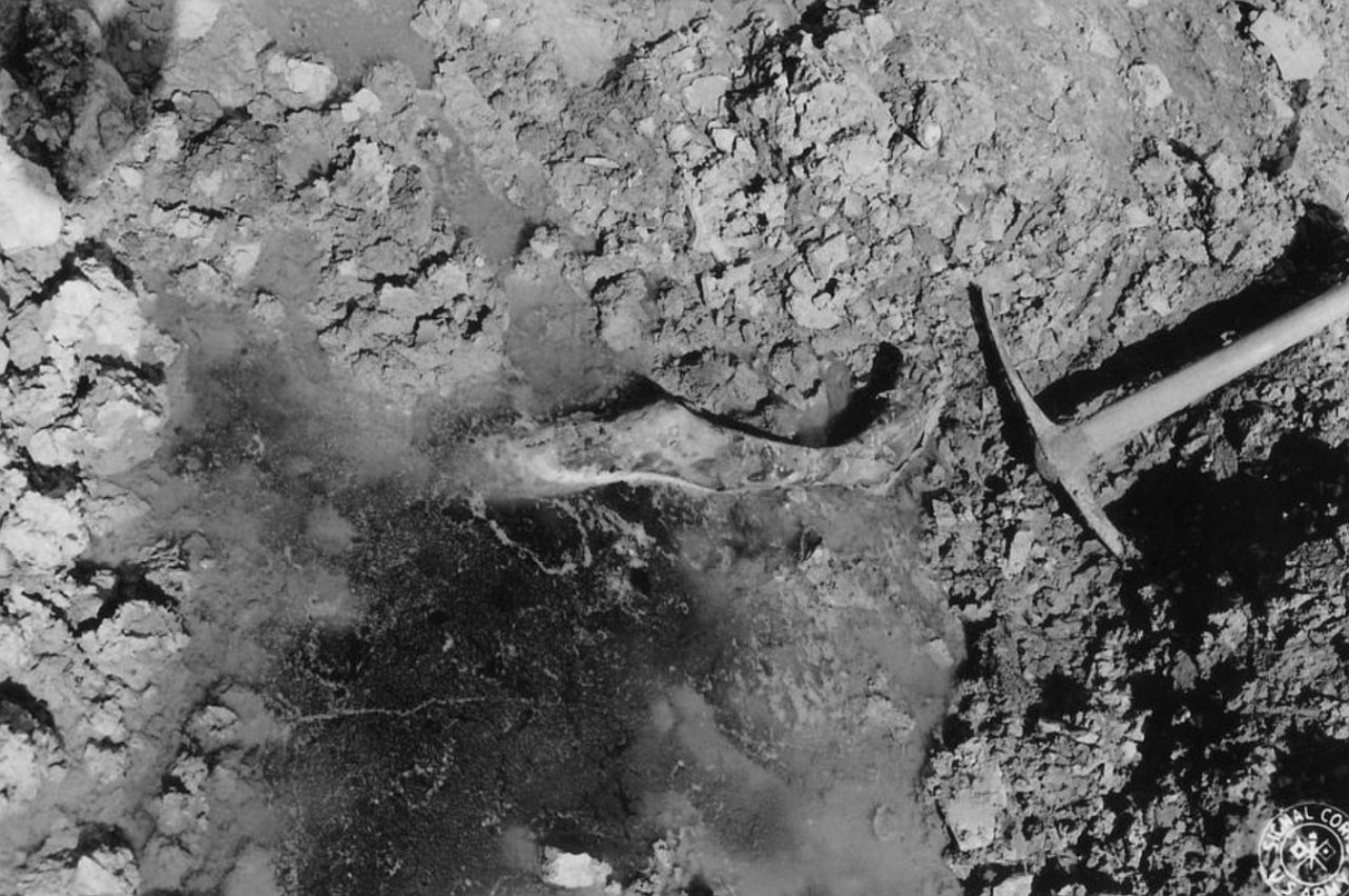
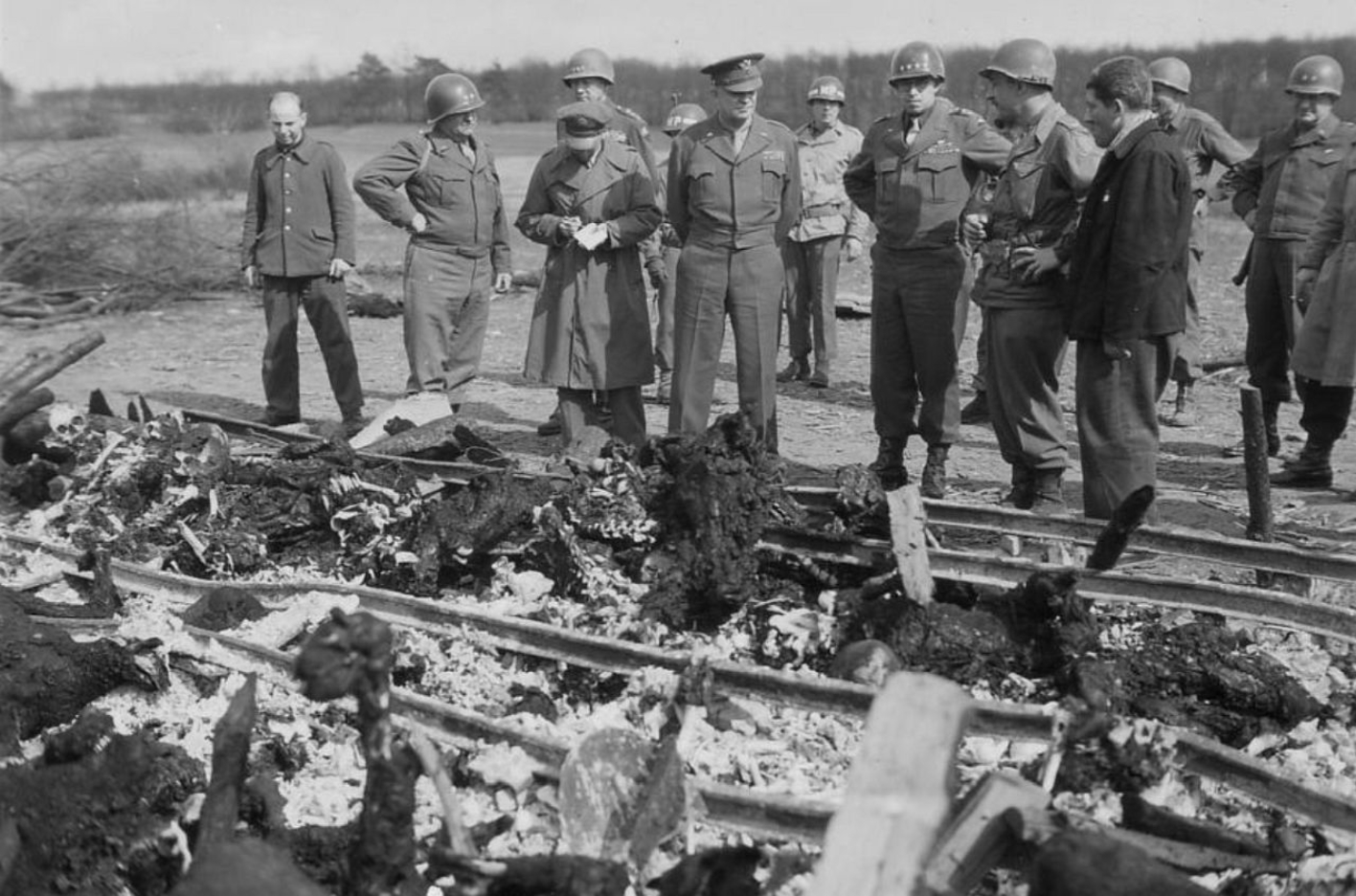
The barracks had already been built in 1940 for Wehrmacht troops carrying out drills there; the improvised camp fence and wooden watchtowers were erected in November 1944. The spruce trees were planted with the intention of someday concealing the site from view. Ohrdruf (code name: S III), a subcamp of Buchenwald, was the first concentration camp to be liberated by the Western Allied troops in 1945. The photos of the emaciated, burnt and bullet-ridden bodies of inmates found by the shocked soldiers of the 3rd U.S. Army still shape our image of the National Socialist crimes to this day.
It was not until November 1944 that the subcamp was established on the grounds of a military training area outside Ohrdruf. It consisted of a North and South Camp, later joined by a tent camp near Espenfeld and a camp in Crawinkel. It was built to accommodate inmates who were to perform forced labour in the SS construction projects. In this case the project was utterly ludicrous: in the very final days of the war, the concentration camp inmates were to build an underground bunker to serve as an alternative headquarters for the German Reich government. It was never completed.
At the end of 1944, there were already more than 10,000 inmates in the camps and by the end of March 1945 altogether some 20,000: mainly Russians, Poles and Hungarian Jews, as well as Frenchmen, Czechs, Italians, Belgians, Greeks, Yugoslavs and Germans. One survivor reported that there were no beds in the barracks, just “bloody straw and lice” on the floor. And although it was winter, not all of the inmates lived in barracks: former stables, tents and old bunker buildings were spread out with straw to serve as accommodations. The work shifts were designed in such a way as to ensure the workers’ complete debilitation: in addition to shifts of initially ten to eleven, later fourteen hours of heavy physical labour building roads, railway tracks and underground bunkers, the inmates were subjected to hours of marching and standing at roll call, the absence of even the most minimal standards of hygiene and medical care, insufficient nourishment and inadequate clothing. Reinforced by the Auschwitz guard units in early January 1945, the SS nevertheless cruelly insisted on the continuation of the tunnel construction project. More than 3,000 died in the camp of exhaustion or were murdered.
The SS transferred those who could no longer work to death camps: 4,300 sick inmates were transported to Bergen-Belsen or the Buchenwald Little Camp with the status “unfit for work”. It must therefore be assumed that in the brief period from November 20, 1944 to April 5, 1945, Ohrdruf Subcamp claimed far more than 7,000 lives. As the American troops advanced, the SS undertook to evacuate the inmates – still numbering more than 13,000 – to Buchenwald. The death marches through the rural area of Thuringia began on April 1, 1945 with the SS, the Volkssturm and members of the Hitler Youth killing more than 1,000 persons on the way. Having previously buried their victims in mass graves, the SS now had the decaying corpses uncovered again and attempted to burn them. In the North Camp they massacred those of the inmates deemed unable to march: the exhausted prisoners were taken to the muster ground on the pretext that they would receive rations; there the SS shot them down and left them lying.
On April 4, 1945, units of the 3rd U.S. Army reached the almost completely evacuated camp and found countless dead. Meyer Levin, one of the first soldiers in Ohrdruf, wrote in his memoirs:
“We had known. The world had vaguely heard. But until now no one of us had looked on this. Even this morning we had not imagined we would look on this. It was as though we had penetrated at last to the very center of the black heart, to the crawling inside of the vicious heart. … Now we knew. Nothing afterward told us more. Bergen Belsen, Dachau - we became specialists.”
Dwight D. Eisenhower, supreme commander of the Allied forces, visited the camp on April 12, 1945. He wrote:
“I have never felt able to describe my emotional reactions when I first came face to face with indisputable evidence of Nazi brutality and ruthless disregard of every shred of decency. Up to that time I had known about it only generally or through secondary sources. I am certain, however, that I have never at any other time experienced an equal sense of shock.”
The military training area was taken over by the Soviet army in July 1945, and the North Camp was razed to the ground. Two commemorative stones erected in this period pay tribute to the dead. In 1993 the Federal Republic of Germany took charge of the grounds.


